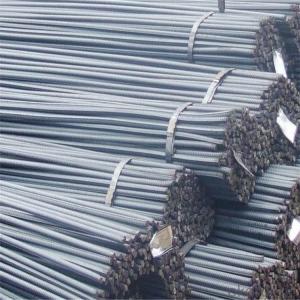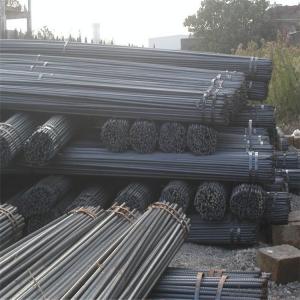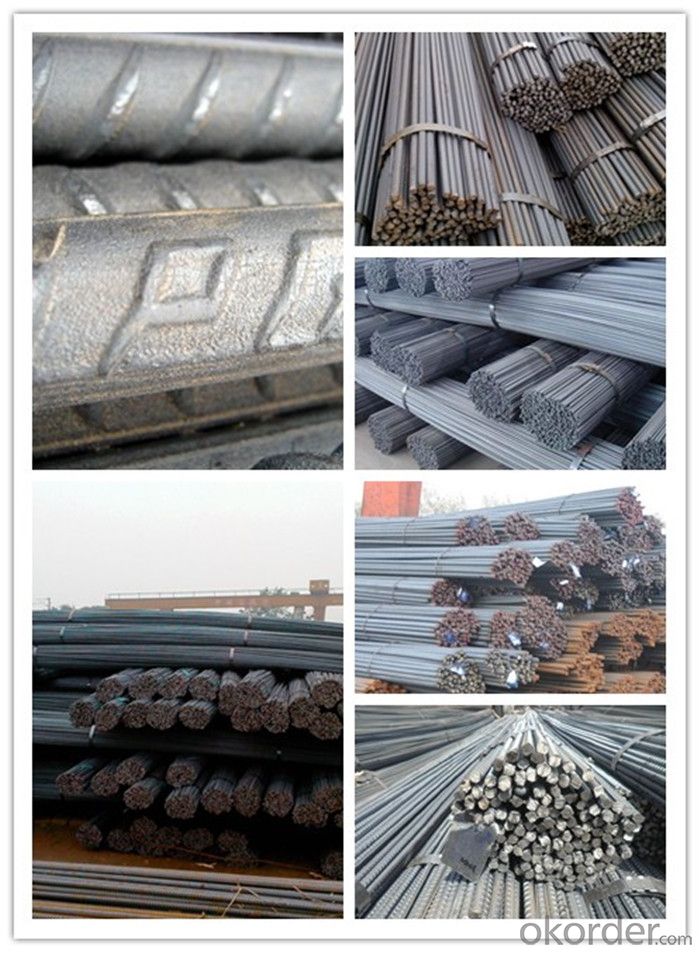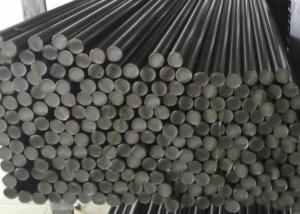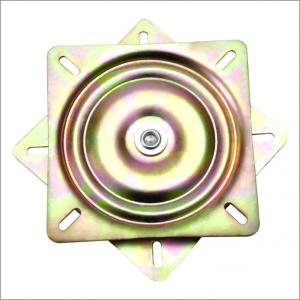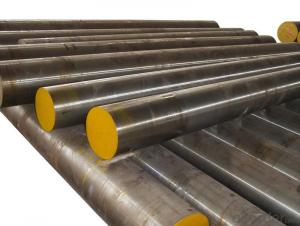ASTM A615/BS4449 Reforcing Steel Bar
- Loading Port:
- Tianjin
- Payment Terms:
- TT OR LC
- Min Order Qty:
- 180 m.t.
- Supply Capability:
- 50000 m.t./month
OKorder Service Pledge
OKorder Financial Service
You Might Also Like
Item specifice
ASTM A615/BS4449 Reforcing Steel Bar
Description of ASTM A615/BS4449 Reforcing Steel Bar
1, Diameter: 5.5mm-10mm ASTM A615/BS4449 Reforcing Steel Bar
10m- 40mm ASTM A615/BS4449 Reforcing Steel Bar
2, Length: 6m, 9m, 12m or customized
3, Standard: GB, ASTM, AISI, SAE, DIN, JIS, EN
OEM technology - send detailed technical parameters for accurate quotation.
2, Produce Process: smelt iron - EAF smelt billet - ESR smelt billet -
hot rolled or forged to get the steel round bar and plate
3, Heat Treatment: annealing, normalizing, tempering, quenching
4, Surface Treatment: Black
5, Quality Assurance: We accept third party inspection for all orders.
You can ask testing organizations such as SGS, BV, etc. to test our products before shipping.
Chemical Composition of ASTM A615/BS4449 Reforcing Steel Bar
Grade | Technical data of the original chemical composition(%) | |||||
Reinforcing steel bar HRB335 | C | Mn | Si | S | P | B |
≤0.25 | ≤1.60 | ≤0.80 | ≤0.045 | ≤0.045 | >0.0008 | |
Physics Capability | ||||||
Yield Strength(N/cm2) | Tensile Strength(N/cm2) | Elongation(%) | ||||
≥ 335 | ≥490 | ≥16 | ||||
Reinforcing steel bar HRB400 | C | Mn | Si | S | P | B |
≤0.25 | ≤0.16 | ≤0.80 | ≤0.045 | ≤0.045 | 0.04-0.12 | |
Physics Capability | ||||||
Yield Strength(N/cm2) | Tensile Strength(N/cm2) | Elongation(%) | ||||
≥ 400 | ≥ 570 | ≥ 14 | ||||
Products Show of ASTM A615/BS4449 Reforcing Steel Bar
Company Information
CNBM International Corporation is the most important trading platform of CNBM group.
Whith its advantages, CNBM International are mainly concentrate on Cement, Glass, Iron and Steel, Ceramics industries and devotes herself for supplying high qulity series of refractories as well as technical consultancies and logistics solutions.


F A Q
1, Your advantages?
professional products inquiry, products knowledge train (for agents), smooth goods delivery, excellent customer solution proposale
2, Test & Certificate?
SGS test is available, customer inspection before shipping is welcome, third party inspection is no problem
3, Factory or Trading Company?
CNBM is a trading company but we have so many protocol factories and CNBM works as a trading department of these factories. Also CNBM is the holding company of many factories.
4, Payment Terms?
30% TT as deposit and 70% before delivery.
Irrevocable L/C at sight.
5, Trading Terms?
EXW, FOB, CIF, FFR, CNF
6, After-sale Service?
CNBM provides the services and support you need for every step of our cooperation. We're the business partner you can trust.
For any problem, please kindly contact us at any your convenient time.
We'll reply you in our first priority within 24 hours.
- Q:What are the main applications of special steel in the power transmission industry?
- Special steel is used in various applications within the power transmission industry. Some of the main applications include manufacturing of power transmission line towers, transmission line conductors, and high-voltage insulators. Special steel is also used in the production of power transmission cables, transformers, and other critical components, ensuring efficient and reliable electricity transmission.
- Q:What are the different coating materials used for special steel?
- There are several different coating materials used for special steel, including zinc, aluminum, nickel, tin, and epoxy-based coatings. These coatings are applied to enhance the corrosion resistance, improve durability, and provide a decorative finish to the special steel.
- Q:What are the different types of tool steel?
- There are several types of tool steel, including high-speed steel, cold work steel, hot work steel, and shock-resisting steel. Each type is specifically designed for different applications and has unique properties to withstand various conditions and demands. High-speed steel, for example, is known for its ability to retain hardness at high temperatures, making it suitable for cutting tools. Cold work steel is used for applications involving cutting, shearing, and forming metals at lower temperatures. Hot work steel, on the other hand, is designed to withstand high temperatures and is commonly used in die casting and forging. Lastly, shock-resisting steel is used in applications where the tool is subjected to high impact or sudden shocks, such as in chisels or hammers.
- Q:What are the different types of heat treatment processes used for special steel?
- There are several types of heat treatment processes used for special steel, including annealing, normalizing, quenching, tempering, and case hardening. These processes are used to modify the properties of the steel, such as improving its hardness, strength, and toughness, to meet specific application requirements.
- Q:What are the different methods of improving the impact toughness of special steel?
- There are several methods that can be employed to enhance the impact toughness of special steel. Here are a few commonly used techniques: 1. Heat Treatment: One of the most effective methods is heat treatment, which involves subjecting the steel to specific heating and cooling processes. For instance, quenching and tempering can significantly increase the impact toughness of steel. Quenching involves rapidly cooling the heated steel in a liquid medium such as oil or water, while tempering involves reheating the quenched steel to a specific temperature and then cooling it slowly. This process helps to refine the microstructure of the steel, making it more resistant to fracture and improving its impact toughness. 2. Alloying: Another method is alloying, which involves adding specific elements to the steel composition. Alloying elements such as nickel, chromium, and molybdenum can enhance the toughness of steel by modifying its microstructure and improving its resistance to impact. These alloying elements help in reducing the formation of brittle phases and improving the ductility of the steel. 3. Grain Refinement: The grain size of steel plays a crucial role in determining its impact toughness. By refining the grain size, the steel can exhibit improved toughness. This can be achieved through methods like controlled rolling or severe plastic deformation techniques. These techniques help in breaking down the large grains and promoting the formation of smaller, more uniform grains, resulting in enhanced toughness. 4. Shot Peening: Shot peening is a surface treatment technique that involves bombarding the steel surface with small metallic or ceramic shots. This process induces compressive stress on the surface, which helps to improve the impact toughness by reducing the likelihood of crack propagation. 5. Welding Techniques: In the case of welding special steel, specific welding techniques can be employed to enhance its impact toughness. Preheating the steel before welding and controlling the welding parameters such as heat input and cooling rate can help in reducing the formation of brittle phases and improving the toughness of the welded joint. It is important to note that the selection of the appropriate method for improving the impact toughness of special steel depends on various factors such as the desired level of toughness, the specific steel composition, and the intended application of the steel. Therefore, a comprehensive understanding of the steel's properties and the specific requirements is crucial in determining the most suitable method for enhancing its impact toughness.
- Q:How does special steel perform in tooling applications?
- Due to its unique properties and characteristics, special steel excels in tooling applications. Also known as tool steel, this type of steel is specifically designed and manufactured to endure the challenging conditions of tooling applications. One major advantage of special steel is its exceptional hardness. Tooling applications often involve cutting, shaping, and forming tough materials, and the hardness of special steel enables it to withstand the extreme pressures and forces involved in these processes effectively. Additionally, this hardness helps maintain the cutting edges' sharpness for extended periods, ensuring consistent and precise performance. Moreover, special steel demonstrates excellent resistance to wear. Tooling applications typically involve repetitive and abrasive actions, which can cause significant wear and tear on the tools. However, the wear resistance of special steel ensures that the tools maintain their performance and longevity, reducing the need for frequent replacements and downtime. Another crucial aspect of special steel is its remarkable toughness. Tooling applications often subject the tools to sudden impacts and shock loads. Special steel's toughness allows it to absorb these impacts without fracturing or breaking, making it highly reliable and durable in such applications. In addition, special steel offers good heat resistance and dimensional stability. Tooling applications frequently involve high temperatures, and special steel's ability to withstand heat prevents it from losing its hardness and other mechanical properties. This ensures consistent performance and dimensional stability, resulting in accurate and precise tooling. Lastly, special steel is also recognized for its corrosion resistance. Tooling applications may expose the tools to moisture, chemicals, or harsh environments, which can lead to corrosion and degradation. The corrosion resistance of special steel protects the tools from these corrosive elements, prolonging their lifespan and maintaining their performance. To conclude, special steel's hardness, wear resistance, toughness, heat resistance, dimensional stability, and corrosion resistance make it highly effective in tooling applications. These properties enable special steel tools to withstand the demanding conditions of tooling applications, ensuring reliable and long-lasting performance.
- Q:What are the main characteristics of tool steel?
- Tool steel is a type of steel that possesses several key characteristics, including high hardness, wear resistance, toughness, and heat resistance. It is specifically designed to be used in the production of tools and dies, where it needs to withstand intense pressure, abrasion, and high temperatures. Additionally, tool steel has the ability to retain its shape and sharpness even under heavy use, making it highly durable and reliable for various industrial applications.
- Q:How does tool steel maintain its hardness at high temperatures?
- Tool steel maintains its hardness at high temperatures primarily due to its high carbon content and the presence of other alloying elements. The carbon in tool steel forms hard and wear-resistant carbides, which help retain hardness even at elevated temperatures. Additionally, alloying elements such as chromium, tungsten, molybdenum, and vanadium contribute to the formation of secondary carbides, which further enhance the steel's resistance to softening and maintain its hardness under high heat conditions.
- Q:What are the different methods of surface finishing for special steel?
- There are several different methods of surface finishing for special steel, each offering unique benefits and achieving specific aesthetic or functional requirements. Some of the most commonly used methods include: 1. Electroplating: This process involves depositing a layer of metal onto the special steel surface through an electrochemical reaction. It provides enhanced corrosion resistance, improved appearance, and can also offer increased hardness or wear resistance. 2. Passivation: Passivation is a chemical treatment that removes surface contaminants and forms a thin oxide layer on the special steel. This process enhances corrosion resistance by preventing the formation of rust or other oxidation products. 3. Polishing: Polishing is a mechanical process that involves using abrasive materials to remove a thin layer of the steel surface, resulting in a smooth and shiny finish. This method is often used to improve the appearance of special steel products or to achieve a specific level of reflectivity. 4. Shot blasting: Shot blasting is a technique that involves propelling small metal beads or shots at high speed onto the special steel surface. This process removes scale, rust, or other surface contaminants, resulting in a clean and textured finish. Shot blasting is commonly used to prepare the steel for subsequent coating or painting applications. 5. Physical vapor deposition (PVD): PVD is a vacuum-based coating process that involves depositing a thin layer of material onto the special steel surface. This method offers excellent adhesion, wear resistance, and can provide various colors or finishes to enhance the aesthetics of the steel. 6. Powder coating: Powder coating involves applying a dry powder onto the special steel surface, which is then cured under heat to form a protective and decorative layer. This method offers excellent corrosion resistance, durability, and a wide range of color options. 7. Anodizing: Anodizing is an electrolytic process that creates a controlled oxide layer on the surface of certain special steel alloys. It provides increased corrosion resistance, improved appearance, and can also enhance hardness or wear resistance. These are just a few of the many methods available for surface finishing special steel. The choice of method will depend on factors such as the desired finish, functional requirements, and the specific properties of the steel being used.
- Q:What are the properties of precipitation-hardening steel?
- Precipitation-hardening steel, also known as PH steel, possesses unique properties that make it highly sought after in various industries. This type of steel has the remarkable ability to be strengthened through a precipitation process, resulting in improved mechanical properties. Some key properties of precipitation-hardening steel include excellent strength, good corrosion resistance, and the ability to maintain these properties at high temperatures. Additionally, PH steel offers good weldability and machinability, making it suitable for a wide range of applications where strength, durability, and resistance to wear and tear are crucial.
1. Manufacturer Overview |
|
|---|---|
| Location | |
| Year Established | |
| Annual Output Value | |
| Main Markets | |
| Company Certifications | |
2. Manufacturer Certificates |
|
|---|---|
| a) Certification Name | |
| Range | |
| Reference | |
| Validity Period | |
3. Manufacturer Capability |
|
|---|---|
| a)Trade Capacity | |
| Nearest Port | |
| Export Percentage | |
| No.of Employees in Trade Department | |
| Language Spoken: | |
| b)Factory Information | |
| Factory Size: | |
| No. of Production Lines | |
| Contract Manufacturing | |
| Product Price Range | |
Send your message to us
ASTM A615/BS4449 Reforcing Steel Bar
- Loading Port:
- Tianjin
- Payment Terms:
- TT OR LC
- Min Order Qty:
- 180 m.t.
- Supply Capability:
- 50000 m.t./month
OKorder Service Pledge
OKorder Financial Service
Similar products
New products
Hot products
Related keywords
